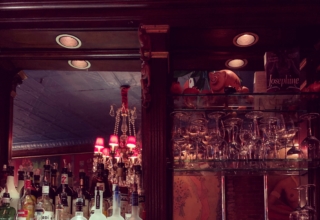
These two models of the Gamma rebel don’t seem suffice. Though I didn’t stay long enough in the land of Gamma to observe change or expansion of dissent, I know a bit about the history of notable rebels like Gandhi and Martin Luther King. I recognize that there can be expansion in the breadth of vision regarding social injustice. Gandhi began by demonstrating and sacrificing for the rights and welfare of workers in salt factories, yet ended his life advocating for a single, unified India that embraces multiple religious beliefs (a stance that led to his assassination). Similarly, Martin Luther King began with a commitment to racial equality and just treatment of Black Americans in the South, but ended up beginning to advocate (before assassination) for broader worker rights and more equitable distribution of wealth throughout America.
With some hesitation, I also recall a third rebel: Che Guevara. He expanded his vision, as someone who became the chief architect of profound social reform in Cuba. Do we discount Che because we don’t like what he said or did? I suggest that Che, like Gandhi and King, represents a second order change agent. He changed the way change was envisioned in Cuba – and changed the way a government (with immense power and absolute control) can be overthrown by an ill-equipped cadre of revolutionaries operating in the Cuban Sierras. Do we find that Che Guevara (with Gandhi and King) is an eternal rebel—one whose identity and very being is embedded in resistance and advocacy for profound change?
Might Gandhi, King or Che have shifted their soapboxes in the Gamma park and would they have been subject to the cutting edge of a knife or the piercing impact of a bullet when changing and expanding their message in this park? I would suggest that the level of anger directed toward each of these eternal rebels and martyrs can be attributed in part to the second order change that they introduced into their society (India, the United States and Cuba)—societies that were struggling with and strangled by multiple layers of injustice and despair.
Gandhi, King and Guevara all recognized that the very process of change must change: there must be change in the way that change is brought about. They dissented against the fundamental ways in which dissent was expressed in their society and the way in which rebellion took place. In a quite ironic manner, Gandhi, King and Guevara brought a new kind of order to a world that was maintained by (and even thriving on) disorder and ineffective change agency.
Download Article 1K Club
















